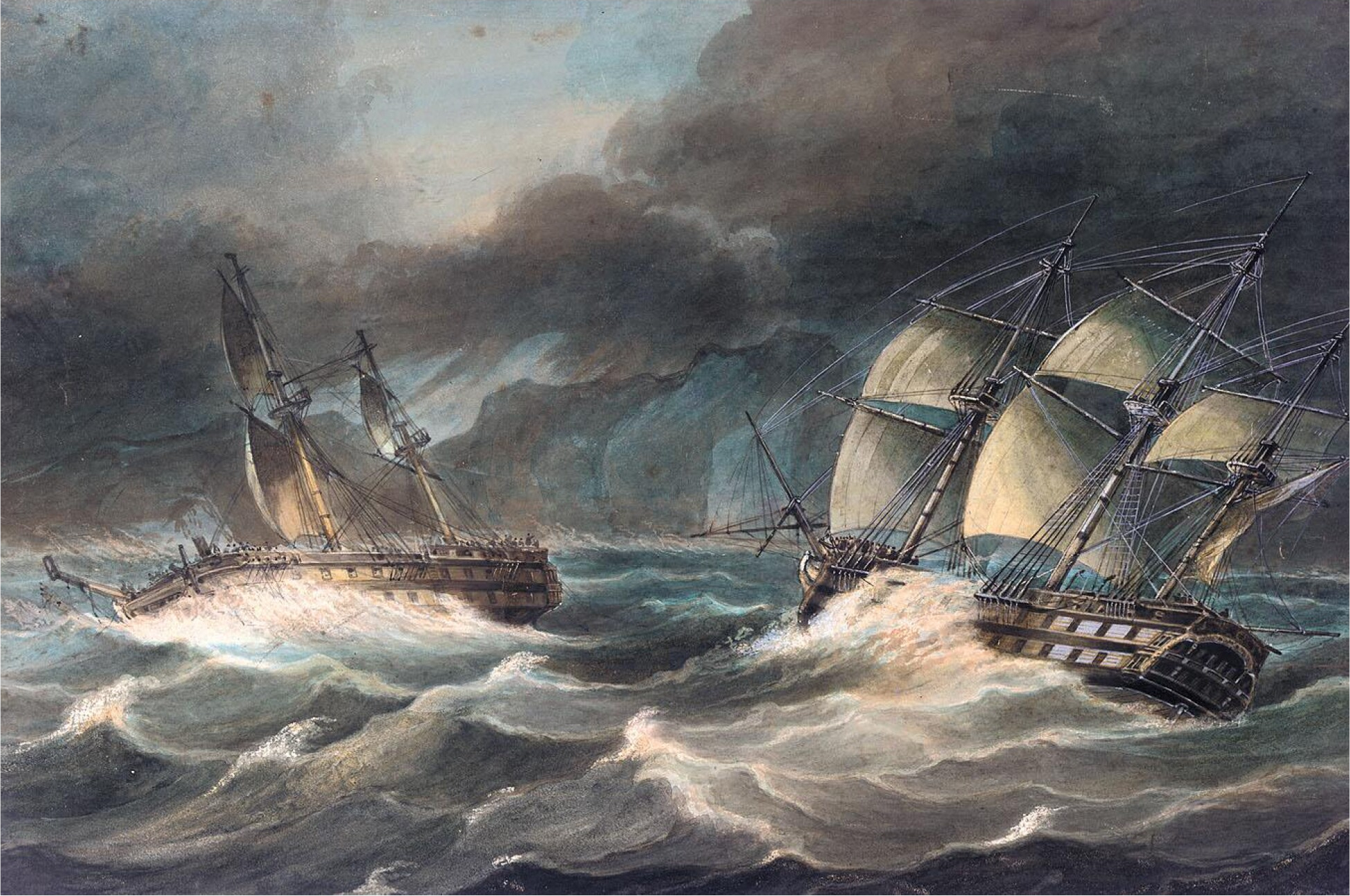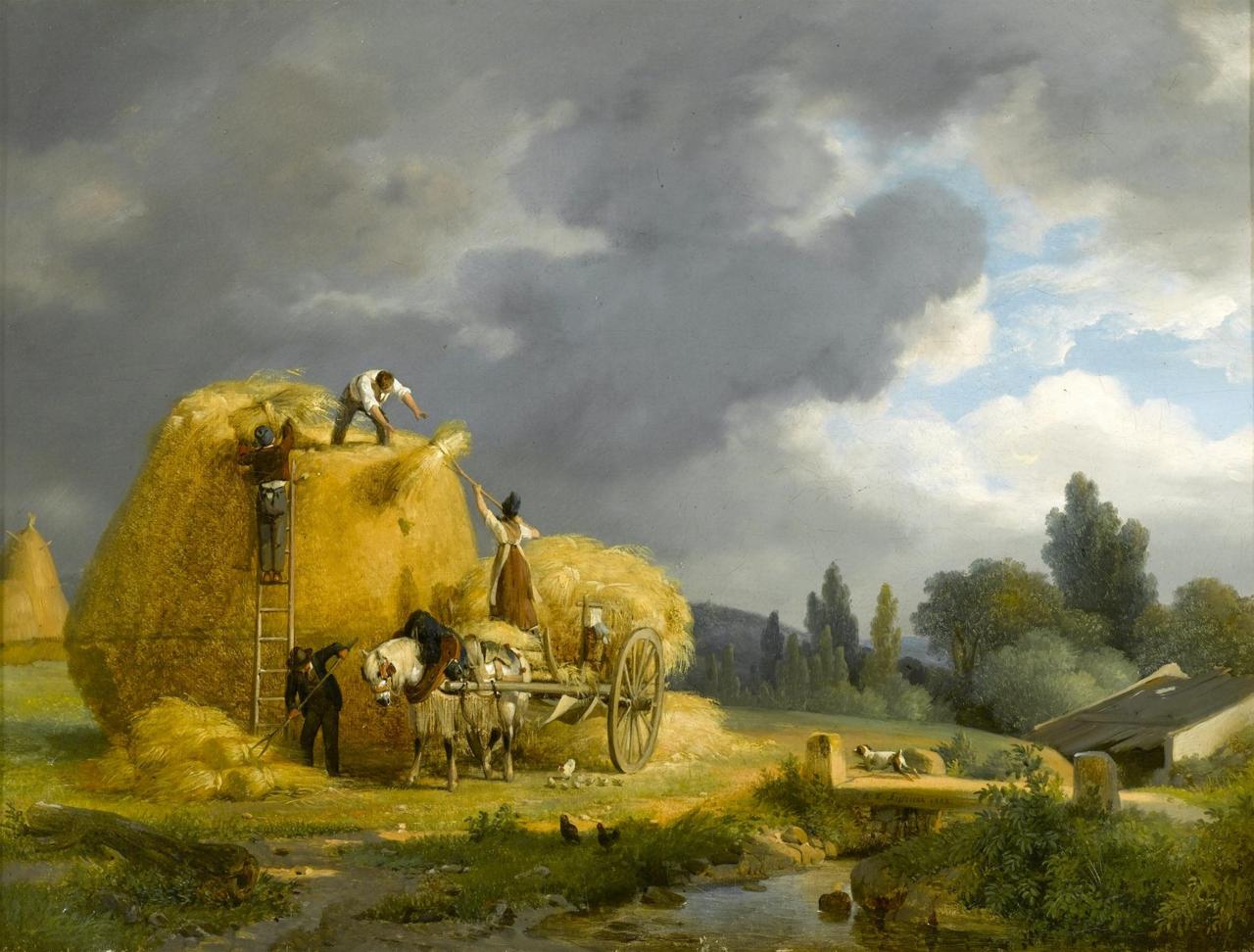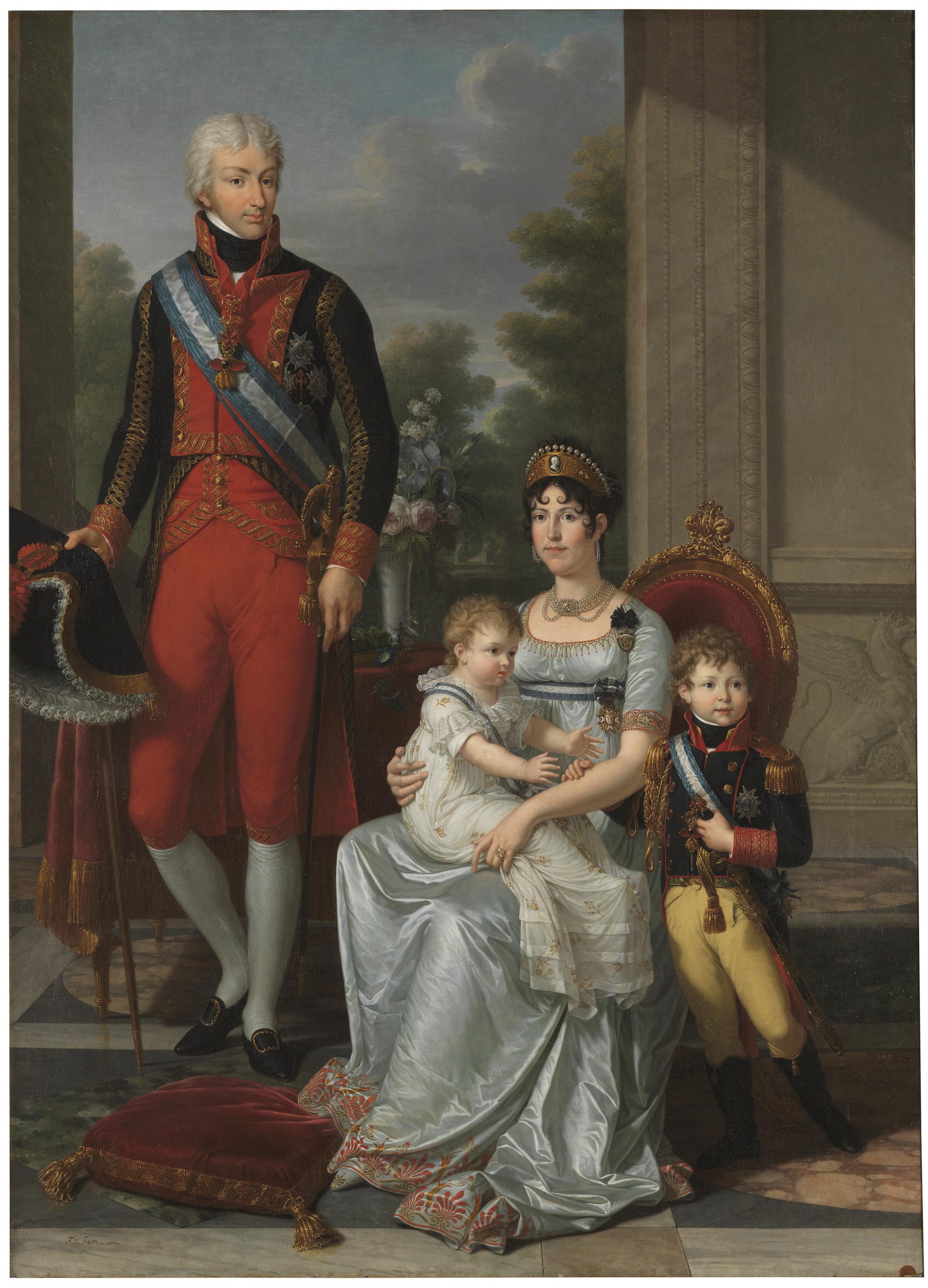|
Prince Alberto Of Naples And Sicily
Prince Alberto of Naples and Sicily (Alberto Lodovico Maria Filipo Gaetano; 2 May 1792 – 25 December 1798) was a Prince of Naples and Sicily as the youngest son of King Ferdinand I of the Two Sicilies and his wife Maria Carolina of Austria. He died aged six near Palermo, Sicily, during a storm on board , a British Royal Navy warship, whilst his family was fleeing, under the care of Admiral Lord Nelson, from Napoleonic troops approaching Naples. Origins Alberto was a member of the House of Bourbon of Naples, a Prince of Naples and Sicily by birth. He was born in Naples and baptised ''Alberto Lodovico Maria Filipo Gaetano'', the sixteenth child and seventh son of King Ferdinand VI of Naples, by his wife Maria Carolina of Austria, a daughter of Empress Maria Theresa and thus a sister of Marie Antoinette. From his birth he was third in line to the Neapolitan throne after his brothers Prince Francis, Duke of Calabria (later King Francis I of the Two Sicilies), and Prince Leopold, ... [...More Info...] [...Related Items...] OR: [Wikipedia] [Google] [Baidu] [Amazon] |
House Of Bourbon-Two Sicilies
The House of Bourbon-Two Sicilies is a cadet branch of the House of Bourbon that ruled Southern Italy and Sicily for more than a century in the 18th and 19th centuries. It descends from the Capetian dynasty in legitimate male line through Philip V of Spain, Philip, Duke of Anjou (later Philip V of Spain), a younger grandson of Louis XIV of France (1638–1715) who established the House of Bourbon, Bourbon dynasty in Spain in 1700 as Philip V (1683–1746). In 1759, King Philip's younger grandson was appanaged with the kingdoms of Kingdom of Naples, Naples and Kingdom of Sicily, Sicily, becoming Ferdinand I of the Two Sicilies, Ferdinand IV and III (1751–1825), respectively, of those realms. His descendants occupied the joint throne, merged as the "Kingdom of the Two Sicilies" in 1816, until 1861, claimed it thereafter from exile, and constitute the extant Bourbon-Two Sicilies family. The succession of the House of Bourbon-Two Sicilies has, since 1960, been disputed between the ... [...More Info...] [...Related Items...] OR: [Wikipedia] [Google] [Baidu] [Amazon] |
Maria Theresa Of Naples And Sicily
Maria Theresa of Naples and Sicily (6 June 1772 – 13 April 1807) was the first Empress of Austria and last Holy Roman Empress as the spouse of Francis II. She was born a Princess of Naples as the eldest daughter of King Ferdinand I of the Two Sicilies and Queen Maria Carolina. Biography Early life Born on 6 June 1772 at the Royal Palace of Naples, Maria Theresa Carolina Giuseppina was the eldest child of Ferdinand I of the Two Sicilies and his wife Maria Carolina. She was her mother’s favorite child from birth, and was henceforth named after her maternal grandmother Empress Maria Theresa. Princess Maria Theresa was taught French, mathematics, geography, theology, music, dancing, and drawing. In the February of 1790, Archduke Francis’s wife, Archduchess Elisabeth, died in childbirth, and it was announced that he would marry one of the princesses of Naples. Maria Theresa and her sister Luisa were both considered for the match. In the end, though, Luisa was chosen to m ... [...More Info...] [...Related Items...] OR: [Wikipedia] [Google] [Baidu] [Amazon] |
Nicholas Pocock - H
Nicholas is a male name, the Anglophone version of an ancient Greek name in use since antiquity, and cognate with the modern Greek , . It originally derived from a combination of two Greek words meaning 'victory' and 'people'. In turn, the name means "victory of the people." The name has been widely used in countries with significant Christian populations, owing in part to the veneration of Saint Nicholas, which became increasingly prominent in Western Europe from the 11th century. Revered as a saint in many Christian denominations, the Eastern Orthodox, Catholic, and Anglican Churches all celebrate Saint Nicholas Day on December 6. In maritime regions throughout Europe, the name and its derivatives have been especially popular, as St Nicholas is considered the protector saint of seafarers. This remains particularly so in Greece, where St Nicholas is the patron saint of the Hellenic Navy. Origins The name derives from the . It is understood to mean 'victory of the people', bei ... [...More Info...] [...Related Items...] OR: [Wikipedia] [Google] [Baidu] [Amazon] |
Princess Caroline Of Naples And Sicily
Marie-Caroline of Bourbon-Two Sicilies, Duchess of Berry (Maria Carolina Ferdinanda Luise; 5 November 1798 – Brunsee, Styria, Austria 16 April 1870) was an Italian princess of the House of Bourbon who married into the French royal family, and was the mother of Henri, Count of Chambord. She led an unsuccessful rebellion against King Louis-Philippe I to install her son on the French throne. Early life Caroline was born at Caserta Palace in Naples. She was the eldest child of Prince Francesco, the future King Francis I of the Two Sicilies, and his first wife, Archduchess Maria Clementina of Austria, the tenth child and third daughter of Emperor Leopold II and Maria Luisa of Spain. Her parents were double first cousins. Caroline was baptised with the names of her paternal grandparents, Maria Carolina of Austria and King Ferdinand IV of Naples, as well as her maternal grandmother Empress Maria Luisa. She spent her youth in Palermo and in Naples. Her mother died in 1801; her ... [...More Info...] [...Related Items...] OR: [Wikipedia] [Google] [Baidu] [Amazon] |
Archduchess Maria Clementina Of Austria
Maria Clementina of Austria (24 April 1777 – 15 November 1801) was an Archduchy of Austria, Austrian archduchess and the tenth child and third daughter of Leopold II, Holy Roman Emperor and Maria Luisa of Spain. In 1797, she married her double first cousin Francis I of the Two Sicilies, Prince Francis, Duke of Calabria, heir to the kingdoms of Kingdom of Naples, Naples and Kingdom of Sicily, Sicily. She was modest, well educated and kind, becoming popular in her adoptive country.Acton, ''The Bourbons of Naples'', p. 463 Afflicted with frail health, she died of tuberculosis at 24. Her only surviving child was Princess Caroline of Naples and Sicily, Princess Caroline, Duchess of Berry. Early life Archduchess Maria Clementina was born at the Villa del Poggio Imperiale, then located in the Grand Duchy of Tuscany, which had been ruled by her father Leopold II, Holy Roman Emperor, Leopold I, Grand Duke of Tuscany (later Holy Roman Emperor) since 1765. She was named after Prince Cle ... [...More Info...] [...Related Items...] OR: [Wikipedia] [Google] [Baidu] [Amazon] |
Charles IV Of Spain
Charles IV (; 11 November 1748 – 20 January 1819) was King of Spain and ruler of the Spanish Empire from 1788 to 1808. The Spain inherited by Charles IV gave few indications of instability, but during his reign, Spain entered a series of disadvantageous alliances and his regime constantly sought cash to deal with the exigencies of war. He detested his son and heir Ferdinand VII, Ferdinand, who led the unsuccessful El Escorial Conspiracy and later forced Charles's abdication after the Tumult of Aranjuez in March 1808, along with ousting Charles's widely hated first minister Manuel Godoy. Summoned to Bayonne by Napoleon Bonaparte, who forced Ferdinand VII to abdicate, Charles IV also abdicated, paving the way for Napoleon to place his older brother Joseph Bonaparte on the throne of Spain. The reign of Charles IV turned out to be a major negative turning point in Spanish history. Early life Charles was the second son of Charles III of Spain, Charles III and his wife, Maria Amalia ... [...More Info...] [...Related Items...] OR: [Wikipedia] [Google] [Baidu] [Amazon] |
Carlota Joaquina Of Spain
Doña Carlota Joaquina Teresa Cayetana of Spain (25 April 1775 – 7 January 1830) was Queen of Portugal and Brazil as the wife of King Dom John VI. She was the daughter of King Don Charles IV of Spain and Maria Luisa of Parma. Detested by the Portuguese court—where she was called "the Shrew of Queluz" ()—Carlota Joaquina gradually incurred the antipathy of the people, who accused her of promiscuity and influencing her husband in favor of the interests of the Spanish crown. After the escape of the Portuguese court to Brazil, she began conspiring against her husband, claiming that he had no mental capacity to govern Portugal and its possessions, thus wanting to establish a regency. She also planned to usurp the Spanish crown that was in the hands of Napoleon's brother, Joseph Bonaparte. After the marriage in 1817 of her son Pedro with the Archduchess Leopoldina of Austria and the later return of the royal family ... [...More Info...] [...Related Items...] OR: [Wikipedia] [Google] [Baidu] [Amazon] |
Francis II, Holy Roman Emperor
Francis II and I (; 12 February 1768 – 2 March 1835) was the last Holy Roman Emperor as Francis II from 1792 to 1806, and the first Emperor of Austria as Francis I from 1804 to 1835. He was also King of Hungary, List of rulers of Croatia, Croatia and List of Bohemian monarchs, Bohemia, and served as the first president of the German Confederation following its establishment in 1815. The eldest son of future Leopold II, Holy Roman Emperor, Emperor Leopold II and Maria Luisa of Spain, Francis was born in Florence, where his father ruled as List of grand dukes of Tuscany, Grand Duke of Tuscany. Leopold became Holy Roman Emperor in 1790 but died two years later, and Francis succeeded him. His empire immediately became embroiled in the French Revolutionary Wars, the first of which ended in Austrian defeat and the loss of the left bank of the Rhine to France. After another French victory in the War of the Second Coalition, Napoleon crowned himself Emperor of the French. In response, ... [...More Info...] [...Related Items...] OR: [Wikipedia] [Google] [Baidu] [Amazon] |
Ferdinand III, Grand Duke Of Tuscany
Ferdinand III(; ; English: ''Ferdinand Joseph John Baptist''. (6 May 1769 – 18 June 1824) was Grand Duke of Tuscany from 1790 to 1801 and, after a period of disenfranchisement, again from 1814 to 1824. He was also the Prince-elector and Grand Duke of Salzburg (1803–1805) and Duke and Elector (to 1806, Grand Duke from 1806) of Würzburg (1805–1814). Biography Ferdinand was born in Florence, Tuscany, into the House of Habsburg-Lorraine on 6 May 1769. He was the second son of Leopold, then Grand-Duke of Tuscany, and Infanta Maria Luisa of Spain. As the Grand Duchy was a secundogeniture, when his father was elected Emperor of the Holy Roman Empire, Ferdinand succeeded him as Grand Duke of Tuscany, officially taking the office on 22 July 1790. In 1792, during the French Revolution, Ferdinand became the first monarch to recognize the new French First Republic formally, and he attempted to work peacefully with it. As the French Revolutionary Wars commenced, however, the rule ... [...More Info...] [...Related Items...] OR: [Wikipedia] [Google] [Baidu] [Amazon] |
Louis Of Etruria
Louis I (; 5 July 1773 – 27 May 1803) was the first of the two kings of Etruria. Louis was the son of Ferdinand, Duke of Parma, and Maria Amalia of Austria. He was born in 1773, when his great-grandfather, King Louis XV of France, was still alive. Early life Louis Francis Philibert () was the second child and eldest son of Ferdinand, Duke of Parma, a grandson of French King Louis XV and Marie Leczinska, and his wife Archduchess Maria Amalia of Austria. Louis and his older sister Carolina were the favorites of their parents. They were personally instructed in religion by their father, despite the fact that their younger children was actually more interested in the subject than they were. In 1778, he hit his head on a marble table while playing with Carolina, and afterward suffered from epilepsy.Justin C. Vovk: In Destiny's Hands: Five Tragic Rulers, Children of Maria Theresa (2010) Marriage and issue In 1795, Louis came to the Spanish court to finish his education and also ... [...More Info...] [...Related Items...] OR: [Wikipedia] [Google] [Baidu] [Amazon] |
Princess Maria Antonia Of Naples And Sicily
Maria Antonia of Naples and Sicily (14 December 1784 21 May 1806) was the youngest surviving daughter of Ferdinand, King of Naples and Sicily, and Maria Carolina of Austria. As the wife of the future Ferdinand VII of Spain, then heir apparent to the Spanish throne, she held the title of Princess of Asturias. It was rumoured that her mother-in-law, Maria Luisa of Parma caused her death, but there is no evidence to prove this. Early life Born at the Caserta Palace in Caserta, Italy, Maria Antonia was the youngest daughter of King Ferdinand IV/III of Naples and Sicily and his first wife, Maria Carolina of Austria. Named after her mother's favorite sister, her maternal aunt Queen Marie Antoinette of France, she was an intelligent girl, having learned several languages by the age of seventeen . Marriage In a series of dynastic alliances, Maria Antonia became engaged to her first cousin, Infante Ferdinand, Prince of Asturias (who later became King Ferdinand VII of Spain), whi ... [...More Info...] [...Related Items...] OR: [Wikipedia] [Google] [Baidu] [Amazon] |
Maria Amalia Of Naples And Sicily
Maria Amalia of Naples and Sicily (Maria Amalia Teresa; 26 April 1782 – 24 March 1866) was List of French royal consorts, Queen of the French by marriage to Louis Philippe I, King of the French. She was the last Queen of France. Among her grandchildren were the monarchs Leopold II of Belgium, Carlota of Mexico, Empress Carlota of Mexico, with whom Maria Amalia regularly corresponded while she was in Second Mexican Empire, Mexico, Ferdinand I of Bulgaria, and Mercedes of Orléans, Queen Mercedes of Spain. Early years Maria Amalia was born on 26 April 1782 at the Caserta Palace just outside Naples. She was the tenth of eighteen children of Ferdinand I of the Two Sicilies and Maria Carolina of Austria. As a young Italian princess, she was educated in the Catholic tradition, which she appears to have taken to heart. Maria Carolina, like her mother, Maria Theresa,Dyson. C.C, ''The Life of Marie Amelie Last Queen of the French, 1782–1866'', BiblioBazaar, LLC, 2008, p. 50. ... [...More Info...] [...Related Items...] OR: [Wikipedia] [Google] [Baidu] [Amazon] |








